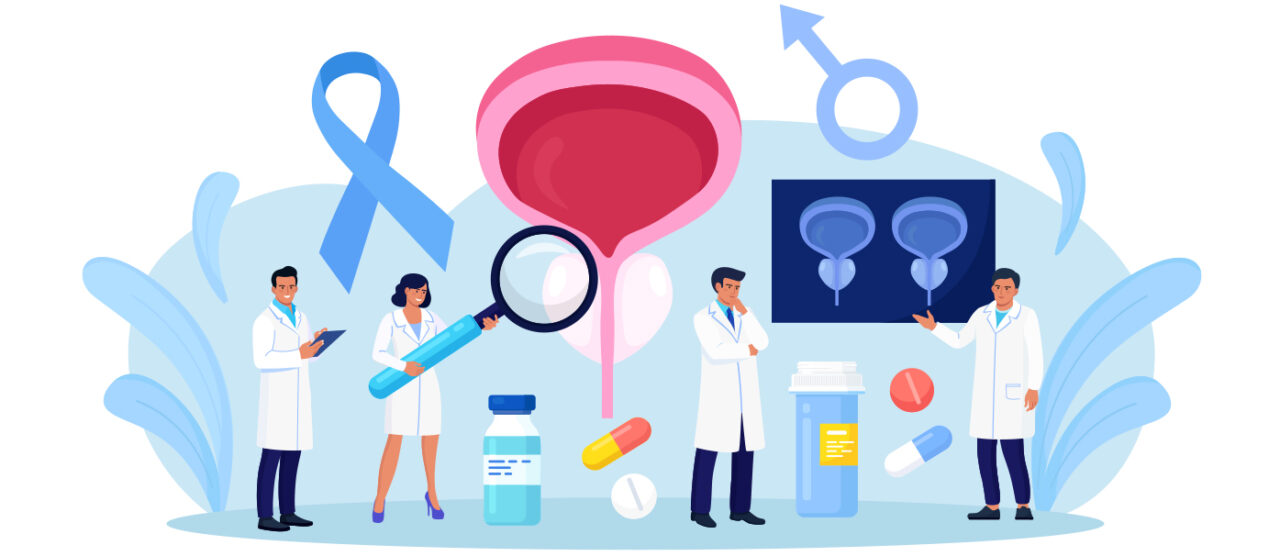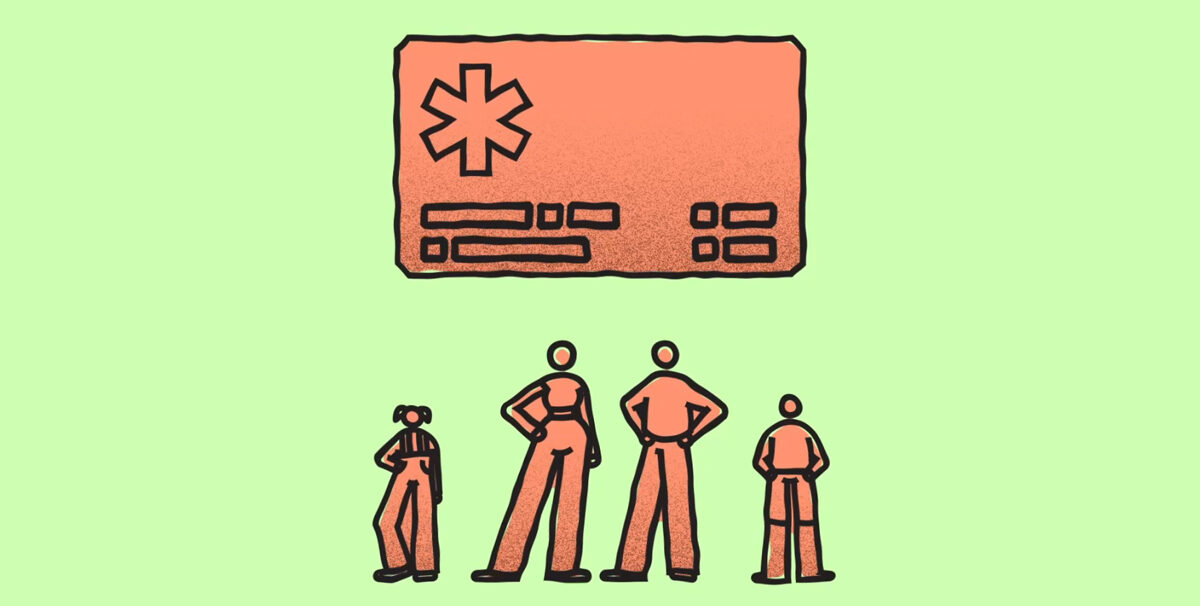Prostate cancer is a serious disease that affects nearly 13 out of every 100 American men. September is Prostate Cancer Awareness Month. As such, take the time to learn about the risks and symptoms of this deadly condition.
Ignoring prostate health can lead to even greater health complications. That is because age is the most common risk factor when it comes to prostate cancer. In other words, the older you are, the higher your chances of developing the disease. Beyond age, other risk factors include race and family history.
So, if you are a man over the age of 55, consider speaking with your doctor about your risk of developing prostate cancer. Be on the lookout for symptoms such as urination trouble, bloody urine, frequent urination, or pain in the pelvis region that does not go away. Even younger men can consider looking into prostate exams, especially if they have a family history of cancer. The sooner prostate cancer is caught, the more treatable it is.
Visit www.cancer.org for additional resources and to learn more about prostate cancer.
This month our Take Action Weeks include:
Preventive Screening: What to Know
Colorectal Cancer Screening: Colorectal cancer screening tests detect cancerous cells and growths, or polyps, that may become cancerous on the inside wall of the colon. Not everyone needs to be tested for colon cancer, though; the need depends on individual risk level. Three major factors influence the risk for colon cancer:
- Age 50 or older
- A family or personal history of colorectal cancer or precancerous polyps
- A personal history of inflammatory bowel disease
If you have these higher risk factors for developing colon cancer, the American Cancer Society (ACS) suggests talking with your doctor about screenings.
Prostate Cancer Screening: Prostate cancer is the most common cancer (besides skin cancer) in American men. As men age, their risk of prostate cancer increases. The ACS suggests that men age 50 and older speak to their doctor about prostate screenings. Consider initiating this talk at an earlier age if you are African-American or have a family history of prostate cancer.
Testicular Exam: Testicular cancer is the most common type of tumor in American men between the ages of 15 and 35. For this reason, all men should receive a testicular examination every time they have a physical exam. In addition, men of all ages, beginning in their teens, should perform a monthly self-examination of their testicles. Testicular exams should check for any masses, as well as changes in size, shape or consistency. For more information about how to do a proper self-exam, visit the Testicular Cancer Resource Center at thetcrc.org/tcexam.
Dental Exam: The American Dental Association recommends regular dental checkups in which the dentist examines the teeth and gums. In addition, the dentist can evaluate bite and determine problems such as teeth grinding or issues with the jaw joint.
Eye Exam: Eye examinations can determine a need for glasses or contact lenses or a need for a changed prescription. They can also identify new vision problems. Common vision problems detected by regular eye exams include glaucoma, macular degeneration and cataracts.
Hearing Test: A hearing test determines potential hearing loss. The American Speech Language Hearing Association recommends screening at least every 10 years through age 50, and every three years thereafter. Ask your doctor how often you should have your hearing checked.
Skin Exam: To check for skin cancer, the doctor will examine your skin from head to toe, looking for moles that are irregularly shaped, have varied colors, are asymmetric, are greater than the size of a pencil eraser, or have grown or changed since your last visit. Talk to your doctor about getting a skin exam during your regular checkup, and also perform routine self-exams, looking for any spots or moles that fit the above characteristics.
Tips for a Healthy Life
The leading cause of death for males in the United States is heart disease—followed closely by cancer. Adhering to a healthy lifestyle can help you avoid becoming part of a statistic.
Watch What You Eat
What you eat and drink can make a significant difference in your overall health. Eating five or more servings of fruits and vegetables a day, little saturated fat and no trans fats can improve your health and reduce your risk of developing heart disease and other chronic diseases.
Know Your Risks
Your genetics, environment and lifestyle all contribute to your health. These factors may put you at an increased risk for developing certain diseases or conditions.
Since you can’t change some of those factors (like your genes), focus on addressing any behaviors you do have control over, such as your diet, activity level and smoking. Make as many changes as you can to improve your well-being.
Get Moving
Nearly 80% of Americans do not get enough physical activity. For adults, the Department of Health and Human Services (HHS) recommends getting at least 150 minutes of moderate or 75 minutes of vigorous aerobic activity throughout the week. HHS also recommends adults do strength training exercises at least two days per week. Being active does not take a lot of time or money, but it does require a commitment. Start slowly, work up to a satisfactory level, and do not overdo it. Develop a workout routine or try something different every day. Find fun ways to stay in shape and feel good, such as gardening, swimming, walking the dog or jogging.
Manage Your Stress
Perhaps now more than ever before, job stress poses a threat to the health of workers and, in turn, to the health of organizations. Balancing obligations to your employer and your family can be challenging.
Protect your mental health by engaging in activities that decrease your stress, such as enjoying your favorite hobby, exercising, reading or spending time with friends or family. Managing your stress can help keep you stay healthy.
Get Routine Exams
Based on your age, health history, lifestyle and other important factors, you and your doctor can determine how often you need to be screened for certain diseases. These include high blood pressure, high cholesterol, diabetes, sexually transmitted diseases and cancers of the skin, prostate and colon.
Prostate Cancer
Prostate cancer is the one of most common type of cancer in American men. Prostate cancer develops from the cells of the prostate gland. Its most common form, occurring in almost 99% of cases, is called prostatic adenocarcinoma.
Many men also develop a condition known as prostatic intraepithelial neoplasia (PIN), which is a change in the microscopic appearance of prostate epithelial cells. PIN should be monitored on a yearly basis because it may lead to the development of prostate cancer. Prostate cancer grows relatively slowly, but can eventually spread to other parts of the body.
Risk Factors
All men should be aware of risk factors for developing prostate cancer. While the exact cause of the disease is unknown, research has identified various factors that contribute to a person’s likelihood of developing prostate cancer.
- Age—The risk increases after age 50.
- Race—African-American men are more likely to develop prostate cancer than Caucasian men.
- Genetics—The chance of getting the disease is more than doubled if a close relative had prostate cancer.
- Being obese or overweight
Signs and Symptoms
Like most other forms of cancer, early detection of prostate cancer is the key to saving lives. There are often few symptoms in the early stages. The following are some possible early warning signs of the disease:
- Slowing or weakening of the urinary stream
- The need to urinate more often
- When the cancer becomes more advanced, symptoms become more prevalent. Symptoms of advanced prostate cancer include:
- Blood in the urine
- Impotence
- Pain in the pelvis, spine, hips or ribs
Survival Rate
Survival rates depend on the treatment performed and whether or not the cancer has spread. The survival rate for men whose cancer has not spread beyond the prostate is almost 100%. Almost 100% of all men with prostate cancer survive at least five years, and 98% survive at least 10 years.
Testicular Cancer
Over 8,000 new cases of testicular cancer are diagnosed every year, primarily affecting men between the ages of 20 and 39.
Risk Factors
Risk factors for testicular cancer include the following:
- Age – Younger men are more likely to develop the disease.
- Race – Testicular cancer is most common among white males.
- An undescended testicle, even after corrective surgery.
- Congenital abnormalities – Men born with irregularities of the testicles, penis or kidneys, as well as those with hernia in the groin, may be at an increased risk.
- Prior history of cancer in one testicle – the opposite testicle is then at a higher risk.
- A family history of testicular cancer.
Diagnosis
Several methods can be used to diagnose and identify the progression of testicular cancer:
- A physical exam – A thorough examination can rule out disorders other than cancer.
- Blood tests – Certain types of testicular cancer raise the level of specific substances in the blood. Blood tests that measure the levels of those substances are used to diagnose testicular cancer, and in some cases determine the extent of the disease.
- Ultrasound – Imaging techniques can help indicate possible tumors.
- Biopsy – The only positive way to identify if a tumor is cancerous is for a pathologist to examine a tissue sample under a microscope.
Prognosis and Treatment
Although the incidence of testicular cancer has risen in recent years, more than 95% of cases can be cured. Treatment for testicular cancer depends on the type of tumor and stage of the disease; the success rate is higher when it is found early. In addition, when the cancer is found early, treatment will often be less aggressive and produce fewer side effects. A combination of surgery, radiation therapy and chemotherapy has one of the highest cure rates.
Prevention
Most testicular cancers are first detected by the patient, either unintentionally or by self-examination. Routine testicular self-examination (TSE) increases a man’s chance of finding a testicular tumor. Locating a tumor this way can boost the odds of early intervention and cure. Testicular tumors often feel like pea-sized, painless lumps or:
- An enlarged testicle
- A feeling of heaviness, hardness or sudden collection of fluid in the scrotum
- A dull ache in the lower abdomen or groin
- Enlargement or tenderness of the breasts
If you find a lump or experience any of the above symptoms, call your doctor immediately.
For more information about how to do a proper self-exam, visit the Testicular Cancer Resource Center at http://tcrc.acor.org/.





